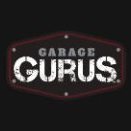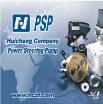-
Welcome to Auto Parts Forum
Whether you are a veteran automotive parts guru or just someone looking for some quick auto parts advice, register today and start a new topic in our forum. Registration is free and you can even sign up with social network platforms such as Facebook, X, and LinkedIn.
Alignment Tip - When to Recalibrate Steering Angle Sensor
-
Similar Topics
-
By 1772668470
Installing a power steering pump involves several steps. It’s important to have the correct tools and follow safety precautions. Here’s a step-by-step guide to help you through the process:
Tools and Materials Needed:
New power steering pump
Power steering fluid
Wrench set
Screwdrivers
Pulley puller (if necessary)
Jack and jack stands
Drain pan
Safety glasses and gloves
Torque wrench
Steps to Install a Power Steering Pump:
-
By 1772668470
Hello every one, this is power steering pump factory in china.We have 17 years of manufacturing experience with high quality and competitive price, if you have interest ,pls feel free to contact us. call whats app:+86 18006521672 email:[email protected]
-
By celvampire
I found what looks to be an unused O2 sensor found in a thrift store, there are no marking anywhere on the part. Can anyone tell just by looking at it, what car/truck it might fit? Thank you.





Recommended Posts
Join the conversation
You can post now and register later. If you have an account, sign in now to post with your account.
Note: Your post will require moderator approval before it will be visible.